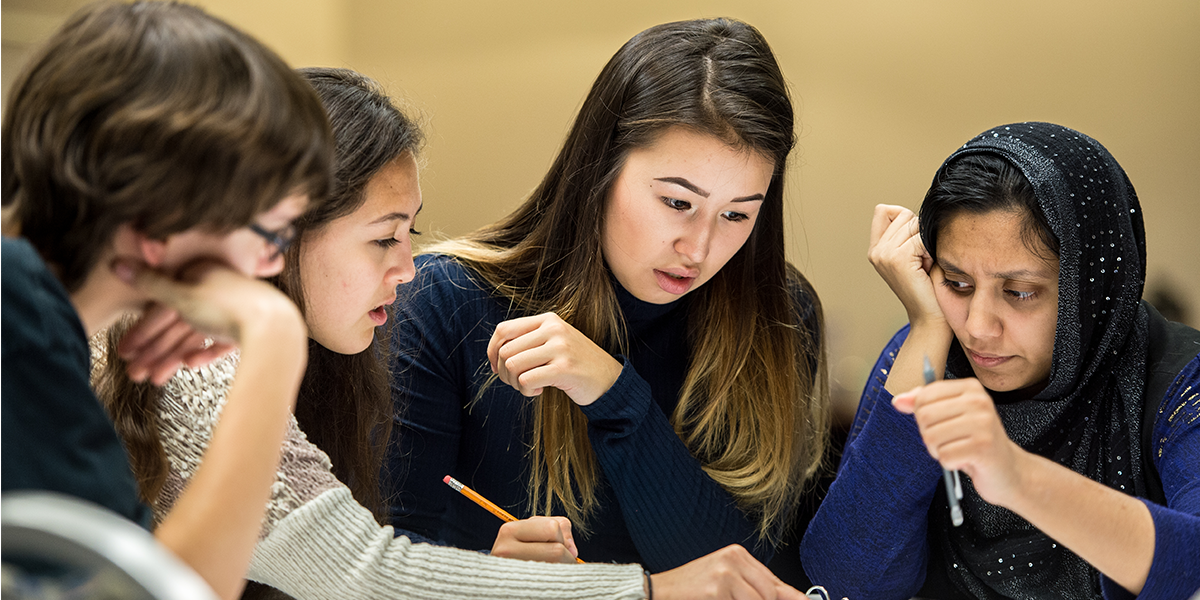
Student FAQ
Below you will find answers to questions that students often ask about SVSU's Undergraduate Research Program. If you don't see your question below, please email us (ugrp@svsu.edu) and we'll try our best to answer it.
How do I get involved with a research project on campus?
There are three primary ways to get involved in the Undergraduate Research Program. Most students will participate in the program by applying for a student researcher position posted on the career services webpage. These postings will typically appear during the first few weeks of the fall, winter, and spring semesters. Students may also get involved by applying for their own student-led research grant. Often, students choose to do this after working with a faculty member as a student researcher. Deadlines for this grant are October 31 and March 15. The third way for students to get involved in UGRP is by applying for student-travel grants to cover expenses associated with traveling to conferences to present work. Deadlines for this grant occur at the beginning of each month. See UGRP website for additional details for each opportunity.
How do I approach a faculty member to either apply to be his/her student researcher or ask him/her to mentor my student-led project?
Remember, faculty members are humans too. You shouldn't be intimidated by them, but you need to do your homework ahead of time. Before you meet to discuss research possibilities, consider the following suggestions:
- What did you enjoy about the class that the faculty member taught? What aspects of the subject are you interested in learning more about?
- Try to find out about the faculty member's research agenda. Check to see if they have a website that discusses their research and try to learn about the topic.
- Find a journal article the faculty member has written and read it. You might not understand everything, but it will provide a better idea of what the faculty member has studied. Plus, it shows that you have taken some initiative and are interested in research.
- Analyze your own strengths and areas you want to gain experience in. Be prepared to explain why you would be an ideal research assistant and what you can contribute and learn from the experience.
- Now, you are ready to set up a meeting.
When is the best time to get involved in a research project?
That answer varies based on your previous experience, academic ability, and coursework. Some students find opportunities as soon as they enter college, while others need a year or two to figure out their major or area of interest and develop the skills necessary to conduct research. It's never too early to begin looking. Initially, you may not be qualified for a position, but you can learn about the qualifications needed so you can prepare yourself for a research experience in the future.
How much time is involved?
The time commitment depends on a lot of different factors - your course load, class schedule, and your role in the research. During the academic year, if you are applying for a student researcher position during the fall or winter semesters, your faculty mentor will likely expect you to work between 6-7hrs/week. However, some students may spend up to 10 hours a week on a project. If a student is receiving academic credit for participating or if the student is conducting research during the spring/summer term, more time is often required.
Can I get paid for doing research?
Yes and no. Student researcher positions do provide a salary for student employees. Additionally, students who have earned a student-led grant may request a salary during the course of their project for up to two semesters. All positions funded through the UGRP pay students at a rate of $10.65/hr for up to $1,000/academic year semester and $2,500/spring-summer semester. Students funded through a student-led grant may request to earn academic credit (rather than salary). Students may not receive both salary and academic credit for the same project.


